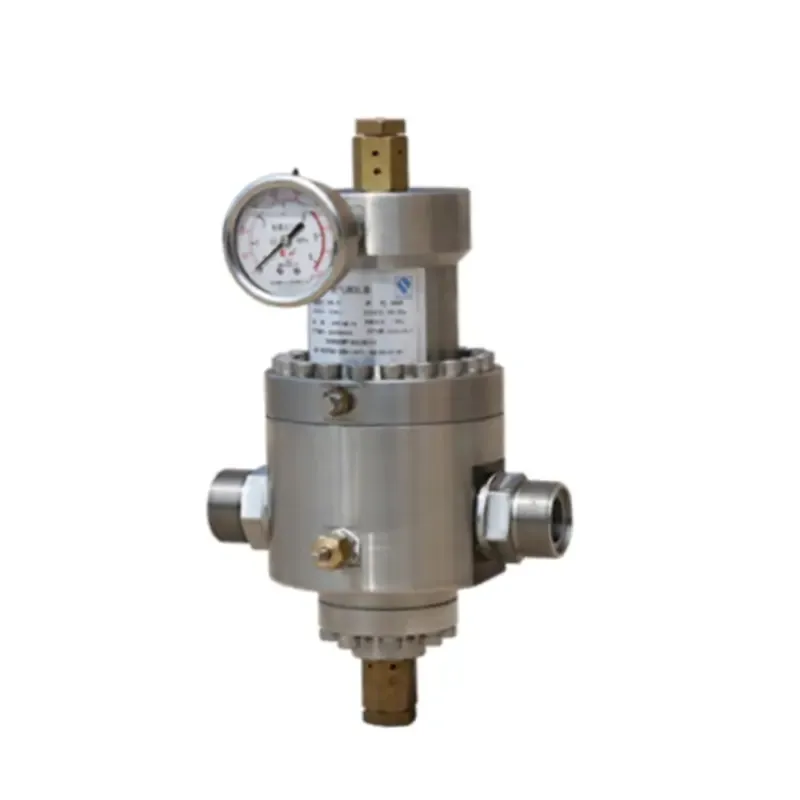
Aug . 04, 2024 02:41
Back to list
Electric Control Valve Regulation for Enhanced System Performance and Efficiency Optimization
Understanding Electronic Regulating Valves A Comprehensive Overview
Electronic regulating valves play a crucial role in modern industrial applications, providing precise control over fluid flow in various systems. These valves are integral to maintaining operational efficiency, safety, and productivity in numerous sectors, including chemical processing, water treatment, and HVAC systems.
What is an Electronic Regulating Valve?
An electronic regulating valve is a type of valve that employs electronic control mechanisms to modulate the flow of fluids. Unlike traditional mechanical valves, which rely on manual adjustments, electronic valves utilize sensors and automation technologies to adjust their positions in real-time based on the required flow rates. This capability can significantly enhance system responsiveness and reliability.
Key Components
The major components of an electronic regulating valve include
1. Actuator The actuator is the heart of the electronic regulating valve. It receives signals from a control system and adjusts the valve's position accordingly. Actuators can be electric, pneumatic, or hydraulic, depending on the application requirements.
2. Control System This component interprets data from sensors and sends commands to the actuator. The control system can be programmed based on specific algorithms that optimize flow control based on real-time conditions.
.
4. Valve Body The valve body houses the internal mechanism and ensures the integrity of the flow path. It is typically made from materials resistant to corrosion and wear, considering the type of fluid being regulated.
صمام تنظيم كهربائي

Benefits of Electronic Regulating Valves
1. Improved Accuracy and Control Electronic valves offer superior precision in regulating fluid flow compared to traditional valves. This accuracy is critical in applications where maintaining specific flow rates is essential for safety and quality.
2. Energy Efficiency By optimizing flow rates, electronic regulating valves can significantly reduce energy consumption in systems such as HVAC. This not only lowers operational costs but also aligns with sustainability goals by minimizing environmental impact.
3. Reduced Maintenance With fewer moving parts compared to mechanical systems, electronic regulating valves generally require less maintenance. Their robust design and automation reduce the likelihood of mechanical failures and extend the lifespan of the equipment.
4. Enhanced Automation The integration of electronic regulating valves into automated systems enables seamless control over complex processes. This capability is particularly valuable in industries that demand high levels of consistency and reliability.
Applications in Various Industries
Electronic regulating valves find applications across a wide range of industries. In the chemical processing industry, they regulate the flow of hazardous materials safely and efficiently. In water treatment facilities, they control the flow of water and chemicals to ensure compliance with environmental standards. The HVAC industry utilizes these valves for managing air and fluid flow, contributing to energy savings and improved comfort.
Conclusion
In summary, electronic regulating valves represent a significant advancement in flow control technology. Their ability to provide precise, efficient, and automated control makes them indispensable in modern industrial processes. As industries continue to evolve and seek out smarter solutions, the importance of electronic regulating valves will only grow, further solidifying their role as critical components in ensuring operational excellence and sustainability.
With ongoing advancements in sensor technology and automation, the future of electronic regulating valves looks promising, paving the way for even greater efficiencies and innovations in fluid management systems across various sectors.
Latest news
-
Safety Valve Spring-Loaded Design Overpressure ProtectionNewsJul.25,2025
-
Precision Voltage Regulator AC5 Accuracy Grade PerformanceNewsJul.25,2025
-
Natural Gas Pressure Regulating Skid Industrial Pipeline ApplicationsNewsJul.25,2025
-
Natural Gas Filter Stainless Steel Mesh Element DesignNewsJul.25,2025
-
Gas Pressure Regulator Valve Direct-Acting Spring-Loaded DesignNewsJul.25,2025
-
Decompression Equipment Multi-Stage Heat Exchange System DesignNewsJul.25,2025

